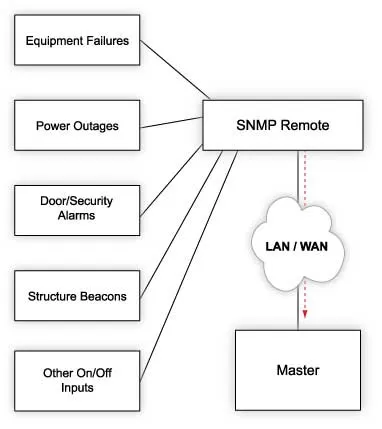Download our free SNMP White Paper. Featuring SNMP Expert Marshall DenHartog.
This guidebook has been created to give you the information you need to successfully implement SNMP-based alarm monitoring in your network.
1-800-693-0351
Have a specific question? Ask our team of expert engineers and get a specific answer!
Sign up for the next DPS Factory Training!

Whether you're new to our equipment or you've used it for years, DPS factory training is the best way to get more from your monitoring.
Reserve Your Seat Today
Discrete alarms are typically used to monitor door alarms, power outages, gear failures, and other on/off conditions that can be signaled by contact closures. Because they directly indicate the status of vital gear, discrete alarms (also called contact closures or digital inputs) are the most common type of remote monitoring alarm.
The first job of an SNMP remote is to collect all of the discrete data at the remote site. That obviously means your remote must have enough discrete inputs (usually accepting a dry contact) for the job. Some sites may only need a few inputs, while a large site may need dozens and dozens. Plan ahead for your future growth. If you run out of inputs, you'll be stuck "OR-ing" a lot of alarms into a single input, and that hurts your alarm detail.
To get the best quality visibility of your discrete alarms, your SNMP remote should support categorizing alarms by their location, time, and severity (Critical, Major, Minor, or Status). A fully capable SNMP remote can include all this information in an SNMP trap sent to your SNMP manager. SNMP traps are highly verbose, so they can easily contain this level of alarm data.
Don't forget that a lot of versions of SNMP have been released. If you have an older SNMP manager that only supports version 1 of the protocol, you won't be able to use v2c SNMP remotes. If you've standardized on secure encrypted SNMPv3, you won't want to purchase remotes that don't support that standard.
If you pay attention when selecting your SNMP gear, you can easily bring all of your discrete alarm data into your SNMP management system. There are other important options, like analog inputs and control relays, but tackling discretes correctly is an excellent first step.